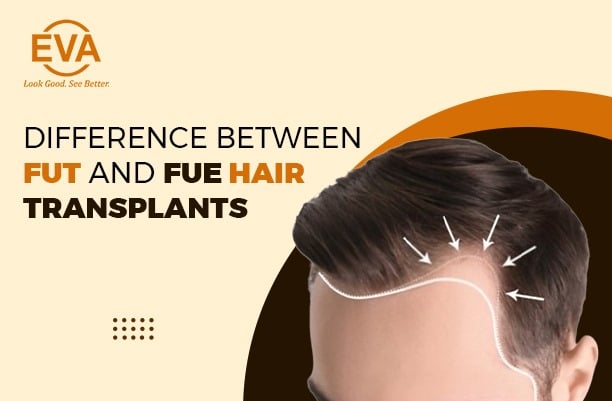In recent years, hair transplantation has advanced greatly, providing people with hair loss with practical solutions. Follicular Unit Transplantation (FUT) and Follicular Unit Extraction (FUE) are two primary methods employed in hair restoration procedures. We will examine the main distinctions between FUT and FUE in this extensive blog post, illuminating their methods, benefits, and factors.
Follicular Unit Transplantation (FUT):
- Harvesting Procedure: FUT, also known as the strip method, is taking a strip of skin off the donor site, which is usually the back of the scalp. Then, under a microscope, this strip is divided into individual follicular units.
- Donor Area Scarring: The linear scar left behind after the strip is removed is one characteristic that sets FUT apart. Even though the scar is typically well hidden by surrounding hair, it stands out more than the tiny, spotty scars connected to FUE.
- Graft Quality: FUT works well for people who need a large number of hair grafts for transplantation because it can extract more grafts in a single session.
- Procedure Time: The FUT procedure generally takes less time compared to FUE since a strip of tissue is removed at once, and the follicular units are prepared in batches.
Follicular Unit Extraction (FUE):
- Harvesting Method: FUE uses a tiny, punch-like tool to remove individual hair follicles straight from the donor region. This procedure takes longer and calls for exact precision.
- Scarring of the Donor Area: Fractional Urea Excision leaves the donor area dotted with small, round scars. Compared to the linear scar from FUT, these scars are less noticeable and allow for shorter hairstyles without showing overt signs of the transplant.
- Graft Quality: Compared to FUT, FUE is linked to a somewhat lower yield of grafts per session. But thanks to technological developments, FUE procedures are now more efficient and can perform more grafts in a single session.
- Procedure Time: Because extracting follicular units one at a time takes time, FUE procedures are typically longer. The patient and the surgical team may want to take the longer recovery period into account.
Considerations for Choosing Between FUT and FUE:
- Scarring Preferences: Those who can wear shorter hairstyles and prefer less scarring might be more inclined toward FUE. Nonetheless, those who feel at ease with a discrete, linear scar might think about FUT.
- Donor Graft Requirements: The decision between FUT and FUE is influenced by the quantity of donor grafts needed. When more grafts need to be placed in a single session, FUT is frequently the preferred option.
- Procedure Time: The amount of time allotted for the procedure may play a role. Because FUE requires a more careful extraction process, it takes longer than FUT.
- Recovery and Healing: Following both procedures, there is a period of recovery. However, since FUE does not require the removal of significant amounts of tissue, the healing process is usually quicker.
Conclusion:
The choice between FUE and FUT is influenced by a number of variables, such as personal preferences, the degree of hair loss, and intended results. It is imperative that you speak with a licensed hair transplant surgeon in Delhi to ascertain the best course of action given each patient’s distinct needs and objectives. In the end, hair restoration can be effectively achieved with both FUT and FUE, and technological developments keep raising the success and satisfaction rates of these treatments.
Also Read:- What Are Various Non-Surgical Hair Loss Treatments?



